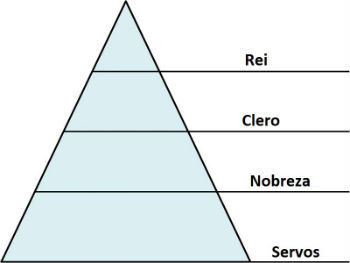The feudal society is one that has developed during the feudal period, a system that prevailed in Europe between centuries V and XV.
Feudal society was essentially rural based on land ownership (feuds) and inserted in a monarchical system of centralization of power. It was marked by self-sufficient production (agrarian and subsistence economics).
Features: Summary
Feudal society was characterized by being a state society , that is, a fixed hierarchical social structure that was divided into estates.
The estates represented social groups or states and, in the case of feudalism, it was divided into basically four instances:
- King : above all estates were kings, who held the greatest power expressed in one figure. They were those who governed and received taxes from other social groups.
- Clergy : represented the layer related to the sacred, that is, those who prayed and strengthened the Catholic religion (popes, bishops, cardinals, monks, abbots and priests). In short, it was the class that held the power of the Church (the most powerful feudal institution) and the one that knew how to read and write.
- Nobility : in addition to the nobles (which included feudal lords, owners of land and wealth), this category included warriors, that is, those who waged war.
- People : include villains, peasants and serfs (slaves), that is, those who worked in the feuds (production of food and buildings) in exchange for housing, food and protection.
In this system, social mobility was almost non-existent, that is, the born would belong to the same group until his death. In short, social position was defined by birth: he was born a servant, he will live as a servant throughout his life.
In addition, feudal society was marked by the relationship of suzerainty and vassalage , that is, between the suzerain and the vassal, marked by the commitment of fidelity between nobles and that implied reciprocal rights and obligations.
In this feudal relationship, the overlords, landowners, donated them to the vassals, who in turn were in charge of caring for, protecting and managing the land received.
This whole model was based on life in the feuds, large tracts of land that had their own economic, political, social and cultural organization. It is worth noting that feuds were the main source of power and wealth in the period of feudalism .
On the spot, feudal lords represented maximum and absolute power, administering and granting laws, while serfs worked on the land.
Life in the feuds was precarious, especially for slaves who worked all their lives in the land of the masters, did not receive wages and had a lower quality and life expectancy than other groups.

